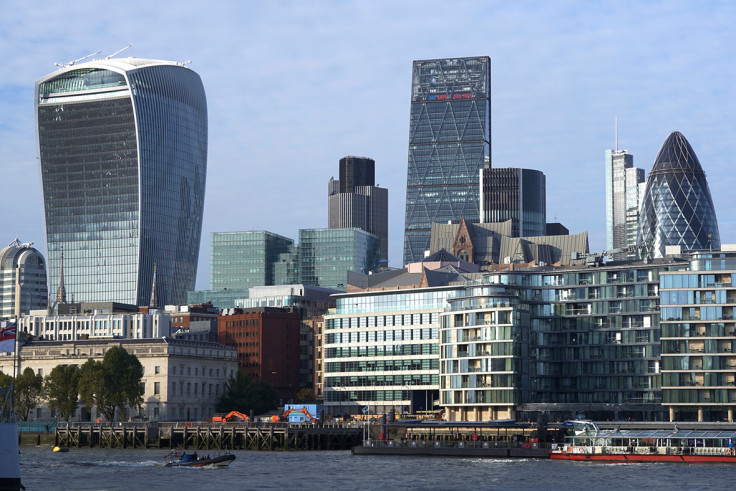Smart buildings and workplace-as-a-service will disrupt the commercial real estate sector
From millennial workers to IT-savvy finance directors, everyone is demanding more from their buildings.

Real estate is among the next tranche of sectors due to face major disruption as a result of technology. Users of real estate – from millennial workers to a generation of more IT-savvy finance directors – are demanding more from their buildings.
And software is now arriving that would enable operators and owners to fulfil those demands. Governments and smart cities are also playing their role, recognising the huge benefits that flow from creating a new digital ecosystem.
Stimulated by the growth of the Internet of Things (IoT), robotics and wider technological advances, office buildings will undergo radical change and become more crucial than ever to commercial success.
It is vital that businesses understand the forces driving this revolution and they take steps to prepare themselves or risk being left behind. The future is nearer than we think.
The next generation of smart buildings
Advanced sensor systems and the ubiquitous adoption of mobile devices, combined with the IoT, will transform the services a building can deliver, optimising energy provision, temperature control, digital wayfinding (using sensors to find deskspace and map surroundings) and, ultimately, a better overall user experience.
The next generation of Building Management Systems (BMS) will function like the building's operating system, taking in data and making decisions on how to optimise the building's design and performance. These systems will produce vast reams of data. Automatic analysis of this information will cement the link between building performance and business objectives.
Joint research by Jones Lang LaSalle (JLL) and Unwork suggests the operational and tactical management of workplaces would be delegated to algorithms that will support the productivity of staff. In the near future, buildings will be able to marry building usage data with information about individual staff movements and work habits to engineer collaboration between staff members, increasing cooperation and driving business success.
Case for a data-driven office
Functioning like a building's operating system, data from multiple smart devices can be transmitted back to the BMS, which can then make decisions on how to optimise building performance. In the event of an emergency, for instance, CCTV cameras could be redirected, access to affected parts of the building restricted, and the information systems used to direct occupants to safety.
On another level, these smart buildings would be able to monitor individual devices (such as TVs, PCs, and desk lamps) via Power over Ethernet (PoE) technology. These devices would be able to be switched off remotely when not required, making the building more sustainable and cost effective.

The most innovative buildings have already embedded some of these solutions in their management systems. Deloitte's The Edge in Amsterdam is overused but nonetheless relevant.
Equipped with more than 30,000 sensors, employees are connected to the building via an app, which helps them to find parking spaces, desks or even other colleagues. Sensors are also used to monitor temperature, movement, light, CO2 and humidity. As a result, it uses 70% less electricity than comparable office buildings.
However, smart buildings would soon go further than even this. Sensors will compile data on space usage within the office building, which would change the very way workplaces are designed.
The analysis of this data will reveal crucial information on work patterns and people's behaviours, which would translate into optimised office space and a business strategy that will place individuals' needs at the very core of it.
Workplace as a service
Technology and the IoT are already being harnessed in the workplace as instruments for businesses to improve the performance and user experience of staff. In The Edge, for instance, the location of every employee is tracked via an app on their smartphone, allowing users to locate each other and find empty meeting rooms easily. This has had a positive effect on productivity, optimising employees' own time management while making their working lives easier to navigate.
Elsewhere, a leading American bank used sociometric badges to identify why some of their call centre employees were more productive than others. Realising that the most productive employees were those that took breaks together, the bank rescheduled employees' breaks to maximise interactions and saw a 10% increase in productivity.
When sociometric badges and similar technologies become suitable for use at scale, it would be possible to gauge the impact of workplace design changes in real time and to experiment and model how this could impact a business. The offices of the future, again powered by devices and data, will go one step further.
By 2030, JLL predicts that the tactical and operational management of workplaces will largely be undertaken by algorithms analysing millions of data sets. Buildings will be able to link location data with information from corporate databases and social media to engineer interactions between staff members.
Offices are soon to become part of the management team of any business – for example, notifying an employee working on a project that another specialist is nearby and suggesting a meeting. Automated scanning of work emails could also lead to preemptive meeting suggestions.
We are on the cusp of a hugely transformative period that would see rapid technological advances fundamentally altering not just where we work, but how we work. In the not too distant future, every successful business will have technology at the heart of its operations, and our working lives will never be the same.
Tom Carroll is Head of EMEA corporate research at real estate specialists Jones Lang LaSalle. He has international experience working across a range of industries, with JLL clients such as AstraZeneca, Barclays, UBS, JP Morgan, SAP, Adidas, Volvo, GM, ExxonMobil, GSK, Pfizer, P&G, Sanofi and many others. Tom appears regularly in the media and is responsible for managing a programme of research covering corporate real estate, location and workplace trends.
© Copyright IBTimes 2025. All rights reserved.






















